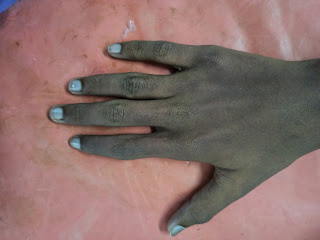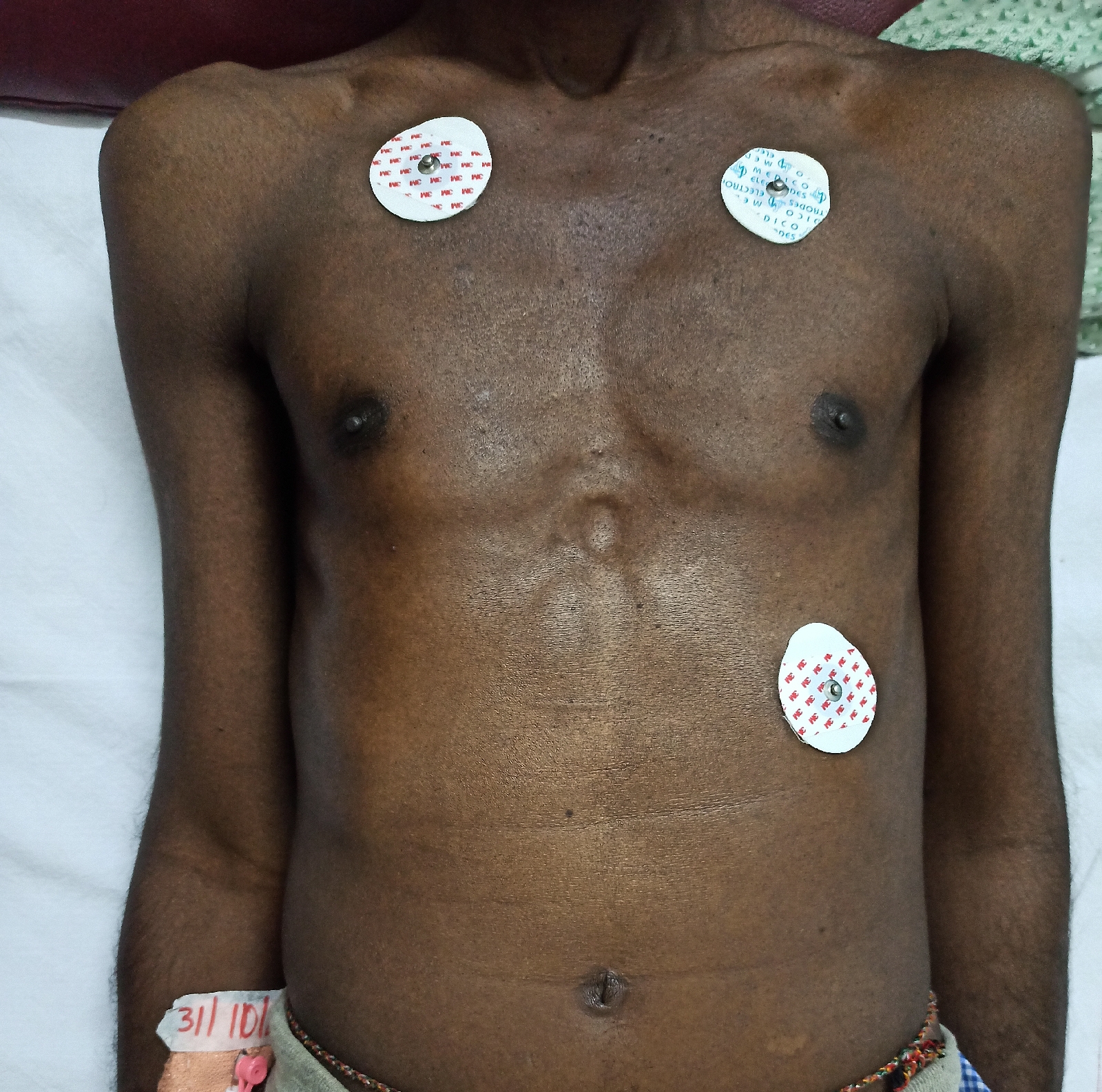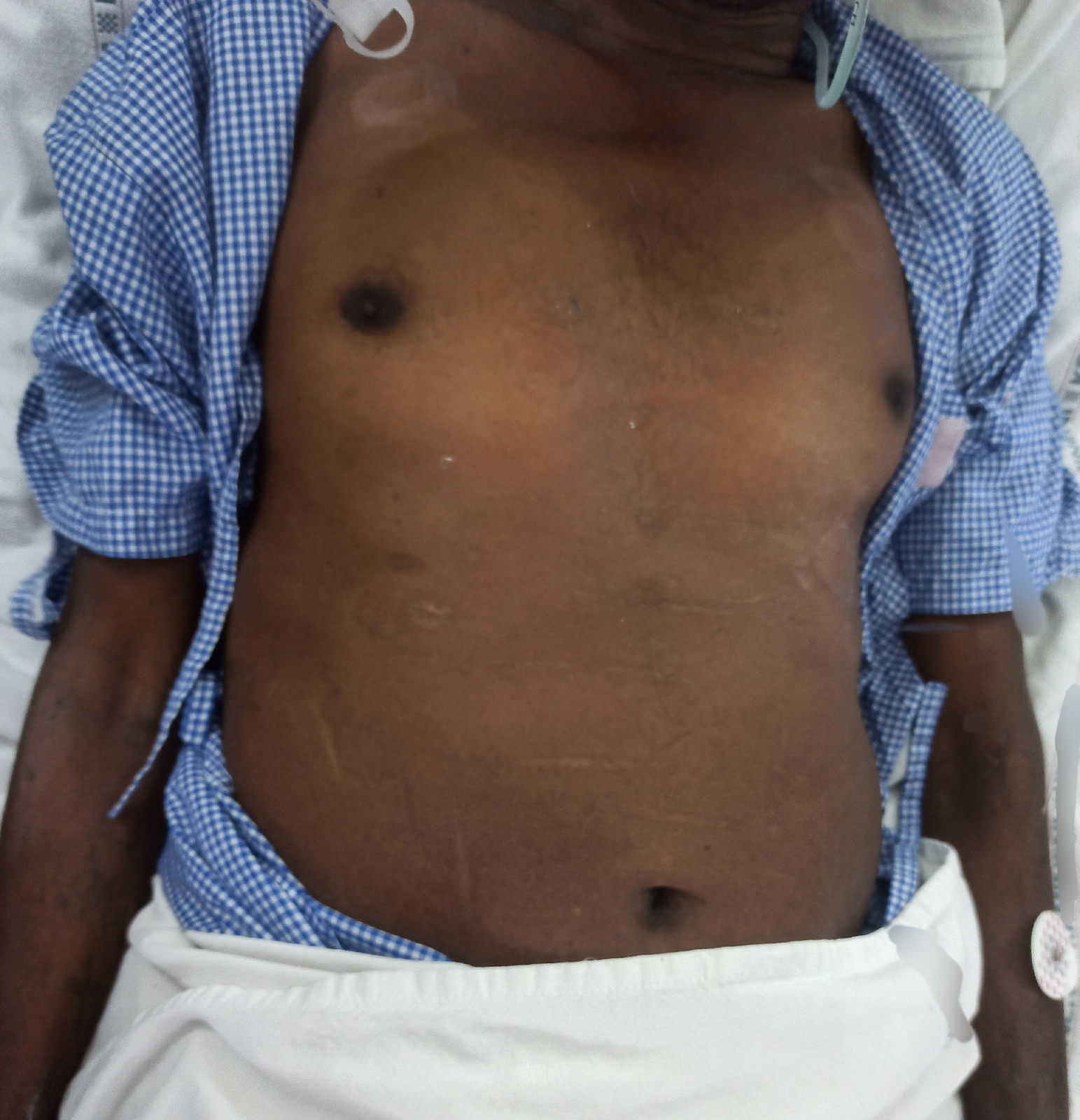INTERN ONLINE ASSESSMENT
CASE 1:
http://aishwaryagannoji35.blogspot.com/2022/10/this-is-online-e-log-book-to-discuss.html
This is a case of 14/Male who came to casualty with bluish discoloration of finger and peripheries were cold that we couldn't even see spo2 values on monitor and He had H/O Fever, vomiting.
Then on examination of lymph nodes, he had cervical and inguinal lymph nodes enlargement. Day by day the bluish discoloration started worsening and he had developed petechiae on his heel and palms.
Inorder to check for the raynauds phenomenon, did control study with another 16 year old male. It was worsening and the only thing that 14 years boy wanted was to go to school and our team wanted to do everything to give him that.
So, FNAC was done but the report was inconclusive. Then planned for excisional biopsy of lymph nodes and on histopathology examination it was stated as reactive lymphadenitis of sinus histiocytosis type .
As days progressed the peripherals stared becoming gangrenous. So i/v/o cardiothoracic vasular surgeron patient was referred to higher centre.
It was so painful to see his parents, who cannot afford the expenses and at the same time they never gave up on him and in the higher centre they stated it as SYSTEMIC LUPUS ERYTHEMATOSIS WITH VASUCULITIS and prescribing necessary medication, he was discharged.
Then again he had fever of high grade, the other time when I looked at him, I remember his first time coming to hospital ,he was weak, sitting in a wheel chair and again started on medication in our hospital. I used to go and meet him regularly all he used to say was, he wanted to go out of this hospital and play with his friends. He expired secondary to ? Thrombotic event.
Learning points:
1. Learnt approach to a patient with fever.
2. For first time saw patient presented with peripheral cyanosis. Examined cervical, axillary,inguinal lymphnodes and lymphnodes were palpable suggesting generalised lymphadenopathy
3. Learnt about raynauds phenomenon and performed test for 14 M and also control 16M to see the changes on palms on exposure to cold.
4. Saw the procedure of cervival lymphnodes FNAC.
5. Learnt and had seen the procedure of excisional lymphnode biopsy of cervical and inguinal lymphnodes.
6. Learnt based on patient clinical status and probable differentials , what antibiotics should be started.
7. Follow up of the patient after referring.
Final diagnosis of the patient:
SLE with secondary antiphospholipid syndrome
AIHA.
He has ana positive, ds DNA positive, bone marrow provisional report says hypocellularity
According to new EULAR CRITERIA FOR SLE
Fever :-2
Thrombocytopenia:- 4
Anti-ds dna :- 6
Complement c3 and c4- 4
Score more than 10 is diagnostic.
8. Learnt about SLE and management.
CASE 2:
http://aishwaryagannoji35.blogspot.com/2022/10/58-year-old-female-with-fever-and.html
58 YEAR OLD FEMALE WITH SHORTNESS OF BREATH AND PEDAL EDEMA
Learning points:
1. Learnt approach to a patient with complaints of shortness of breath whether it could be CVS or respiratory cause.
2.learnt approach to a patient with Complaints of B/L
Pedal edema.
3. Learnt about the procedure of pleural tap under guidance of Dr. Durga Krishna (pgy3).
Importance of lights criteria to differentiate between transudate and excudate.
Learnt causes of transudate type of pleural effusion and exudate type of pleural effusion.
CASE 3:
http://aishwaryagannoji35.blogspot.com/2022/11/58-year-old-male-with-pain-abdomen.html
55 year old male with pain abdomen
Learning points:
1. Learnt approach to a patient with epigastric pain and the differential diagnosis for epigastric pain and how to rule out the cause.
2. Learnt the reason of using THIAMINE for patients with acute pancreatitis with chronic H/O Alcohol intake.
3. Learnt procedure of insertion of Ryles tube, and inserted ryles tube under guidance of Dr Pavan(pgy1).
Also learnt about advantages and disadvantages of ryles tube.
Importance of measurement of ryles tube to be inserted and complications associated if not placed in correct position.
CASE 4:
http://aishwaryagannoji35.blogspot.com/2022/10/45-year-old-female-with-type-2-diabetes.html
45 year old female with Type 2 Diabetes mellitus.
Learning points:
1. Learnt Importance of 7 point GRBS Monitoring and adjustment of dose oral hypoglycemic agents accordingly.
CASE 5:
http://aishwaryagannoji35.blogspot.com/2022/10/85-year-old-female-with-loss-of.html
Learning points:
1. Approach to a patient with hypotension and drugs used.
2. Learnt how to take ABG and interpretation of ABG.
CASE 6:
http://aishwaryagannoji35.blogspot.com/2022/11/35-year-old-male-with-shortness-of.html
35 Year old male with shortness of breath and decreased urine output.
Learning points:
1. Learnt about procedure of FOLEYS catheter insertion and removal.
Advantages and disadvantages of using foleys catheter.
2. Learnt about Right heart failure, how they present, diagnostic approch and management.
Shortness of breath associated with orthopnea and PND.
CASE 7:
http://aishwaryagannoji35.blogspot.com/2022/11/this-is-online-e-log-book-to-discuss.html
58 year old male with shortness of breath
Learning points:
1. In this patient troponin levels were elevated. Learnt about the sensitivity and specificity of troponin I for diagnosis of acute myocardial infarction.
https://pubmed.ncbi.nlm.nih.gov/10693314/
2. Approach to a patient with pulmonary edema.
PROCEDURES:
1. ASSISTED 2 central lines ( under guidance of Dr. Sai charan, Dr. Pavan)
2. Learnt insertion of Ryles tube.
3. Learnt procedure of ascitic tap.( Under dr. Venkat sai.
4. Learnt procedure of pleural tap. ( Under guidance of Dr Durga krishna, Dr pradeep, Dr vinay )
5. Learnt procedure of lumbar puncture. ( Under guidance of Dr. Durga Krishna, Dr. Pradeep, Dr. Bharath).
6. Learnt insertion of Foleys catheter.
7. Assisted in intubation.



Comments
Post a Comment